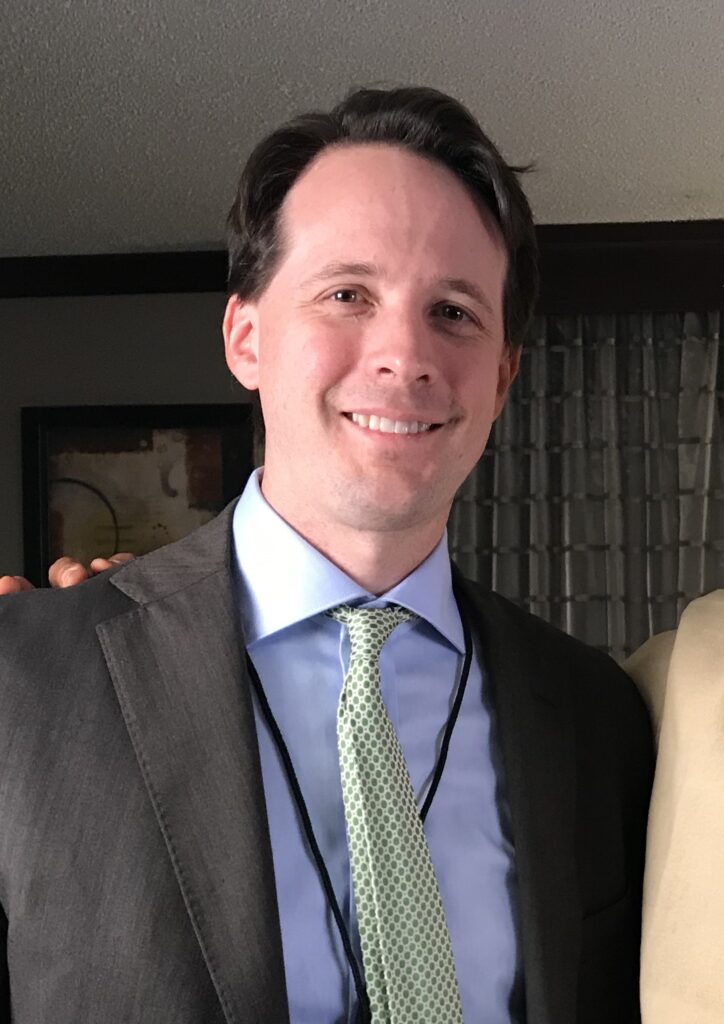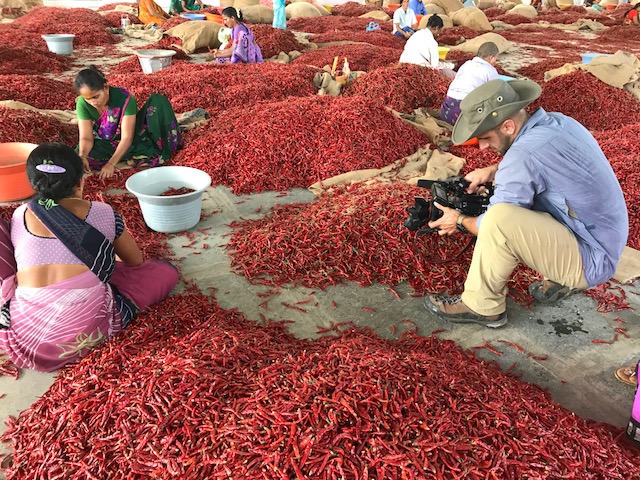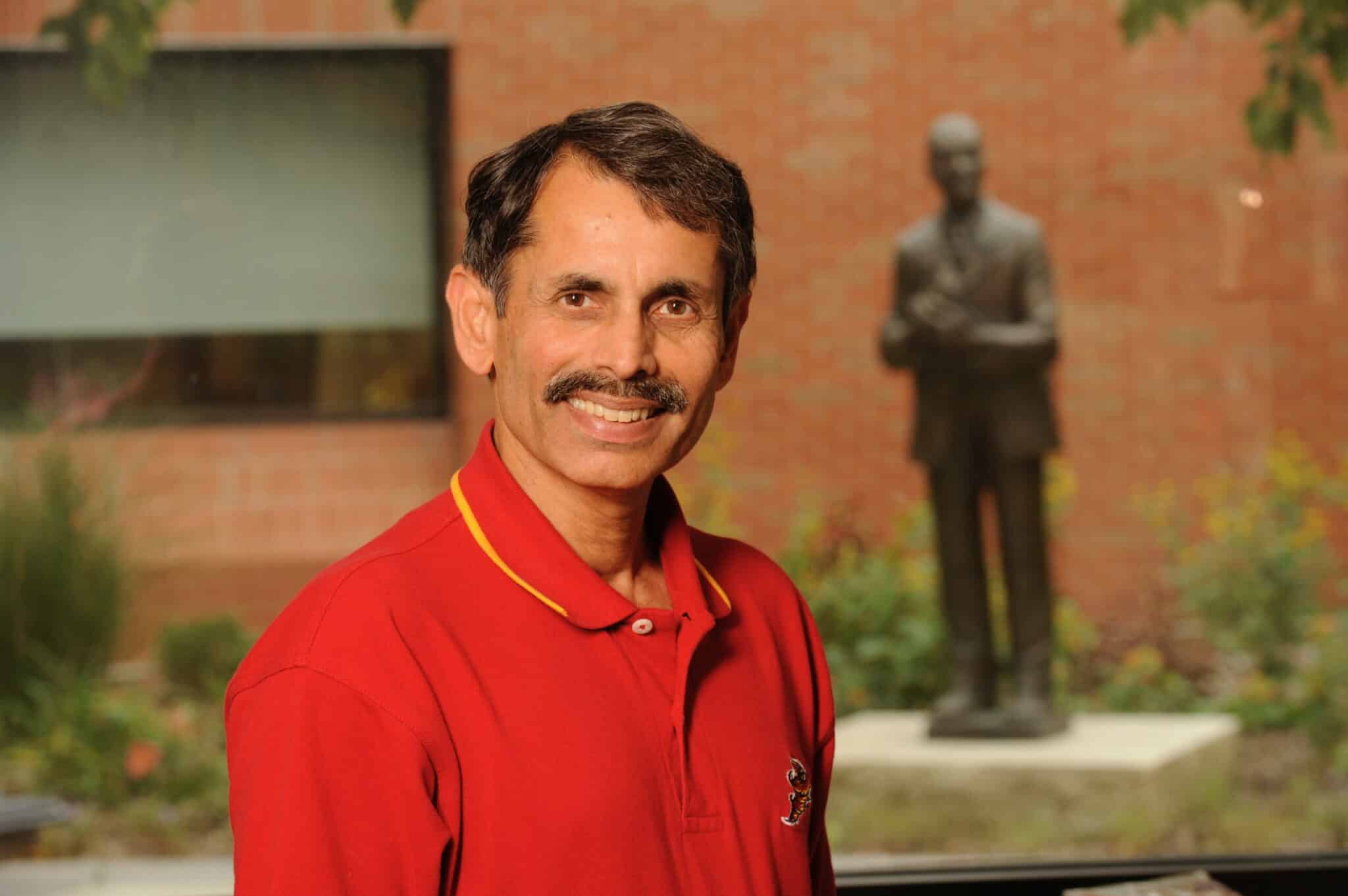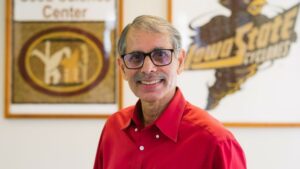Iowa State University’s Seeds! Film seeks to reach the next generation.
Dr. Manjit Misra spent his early years on the family’s sharecrop operation near the Bay of Bengal in India, where he helped oversee harvesting for rice and sugarcane. He appreciates the environment where he grew up, surrounded by banana trees and coconut trees. It’s easy to imagine those impressive coconuts sparking a “seed of wonder” in his mind, even before he knew the inspired turn his future career would take.
“Seeds to me are truly wondrous,” he says. “They are a festival of colors and the miracle of nature.”
Misra has become passionate about the diversity and potential of seeds, from the tiny petunia seed to the large double coconut. He has devoted his life to studying and sharing seeds with the world.
Work and Wonder
As a scientist, Misra has largely focused on seeds as the beginning of all agriculture, but after he moved to the United States in 1971, he began by studying soil and water at the University of Missouri. Even though his focus wasn’t directly on seeds at the time, Misra says that there was still a connection between seeds and water and soil.
It wasn’t until he finished his PhD that he returned to the world of seed. He accepted a job at Iowa State University and began his journey into the wondrous world of seed science.
Cynthia Hicks, communication specialist for the Seed Science Center, says Misra has led the Seed Science Center to grow from a local campus unit into a world-renowned center of excellence for seed science, technology and systems.
Hicks says the purpose was always to “seed a food secure future, globally.”
At the center, Misra is driven by a passion for helping feed hungry people, and an almost awestruck appreciation for the potential that seeds offer society as a whole.
“If we have good seed, we can have good agriculture, and people become healthier,” Misra says. “And it’s not just important for the food we eat, but also for everything we come in contact with on a daily basis, from your cup of coffee in the morning to the energy we use. With seeds, there is so much potential for the world hiding in plain sight.”
But he didn’t want to keep this realization to himself: it’s a message and a mission he wants to share with the world. This past year, he led the center in a creative new endeavor of creating a documentary style film on the wonder of seeds to give this message an even broader audience.
An Inspired Idea
The initial idea for the film was planted in Misra’s mind when he watched a film in a science center. The film focused on land devastation after intense flooding, but this wasn’t a story of despair. The land was rebirthed through one sole surviving plant.
“It occurred to me that making a movie might be a good way to show some of the beauty of seeds to the rest of world,” Misra says.
The film is dedicated to David Lambert, a longtime friend to Misra, advisor to the seed center and one of the initial champions of the idea to create the film.

“He was a great hunger fighter,” Misra says. “He and I talked about making a movie to inspire the younger generations and the general public about the value and beauty of seed.”
Lambert’s son, Walker Lambert, eventually ended up producing and directing the film, and he enjoyed working with Misra to carry on that dream.
“Manjit is a visionary. He thinks big and always goes for it,” Lambert says. “If something is working, then he nurtures its growth. If something’s not, he quickly moves on. He never tries to force something that doesn’t want to naturally happen. This flexibility is really fun to be a part of, and usually yields the most interesting and creative results.”
Reaching and Teaching
Education is at the heart of everything Misra does, and the film falls perfectly into that passion.
One reason for the film was to reach a wider audience than the seed center otherwise would be able to.
“We have a strong outreach program for the center already but that is more focused on seed professionals,” Misra says. “We wanted to present the information in this movie using everyday language, not the scientific jargon that we sometimes use when speaking to those inside the industry.”
He wants to inspire a new generation of leaders who will use the potential of seeds to change the food future of our world.
“I think young people are often more interested in studying medicine or information technology, and those are certainly important,” Misra says. “We need doctors and engineers, but we also need people to have a passion for food and agriculture.”
Hicks says the film team has put together a marketing “action plan” with many different angles that all lead to the same place: getting the film in the hands of educators to inspire the next generation. For Misra, that’s the main goal.
After only a few months, the center has given out nearly 1,000 free DVDs. Misra wants the film to be a tool that teachers can use to inspire their students. Hicks said the film will eventually be available for free download on the center’s website along with student reflection sheets that can be used by teachers.

A large public screening of the film is scheduled for Oct. 13, at the ISU Memorial Union to kick off the Everson Global Seed Symposium, just prior to the World Food Prize.
Thor Hanson, who is the main focus of “A Day Without Seeds,” Robert Llewellyn, who is the main focus of “The Seed Artist,” and World Food Prize laureate Howdy Bouis, who is featured in “Let Seed be Thy Medicine,” are just a few of the special guest speakers for the event. “People can also attend the seed symposium from Oct. 14-15 where we will do a deeper dive into the subjects of the film, as well as show the film,” Hicks says.
Reception and Rewards
The film was shown at the Environmental Film Festival in Washington D.C., and at Iowa State University’s Reiman Gardens, and has been widely praised and very well received.
“A woman at the first screening in Iowa at Reiman Garden’s said the film moved her to tears,” Hicks says. “It really does take you on a journey. It takes you into the lives of other people and shows you a side of the beginning of life that you may not have considered before,” Hicks says.
It has won two Telly Awards, a Silver Telly for the entire film and a Bronze Telly for the episode “A Day Without Seeds.”
That segment is one of Misra’s personal favorites.
“We really take seeds for granted I think,” he says.
Lambert says one of the biggest challenges was narrowing down ideas for the film’s episodes because there were so many ideas discussed, from seed careers, the work being done with global nutrition, and just the beauty of seeds in general.
“One of the things we tried to capture through the film is the wonder of seeds ‚Äî these tiny pods which impact so much of our lives. There’s a mystery to this very beginning of plant life, and we wanted to explore that and its relationship to us,” Lambert says. Misra’s goal for the film is to inspire as many people as possible to appreciate seeds because he believes that will eventually help end the global food crisis.
“I hope people say that the movie got them to think more about seeds, and that they see the value that agriculture brings to society,” Misra says. “I hope they will consider getting involved any way they can, whether that means becoming a scientist, starting a seed company or even just sharing about it. I hope people will do whatever they can to personally get involved in some way, because that will make the difference.”












